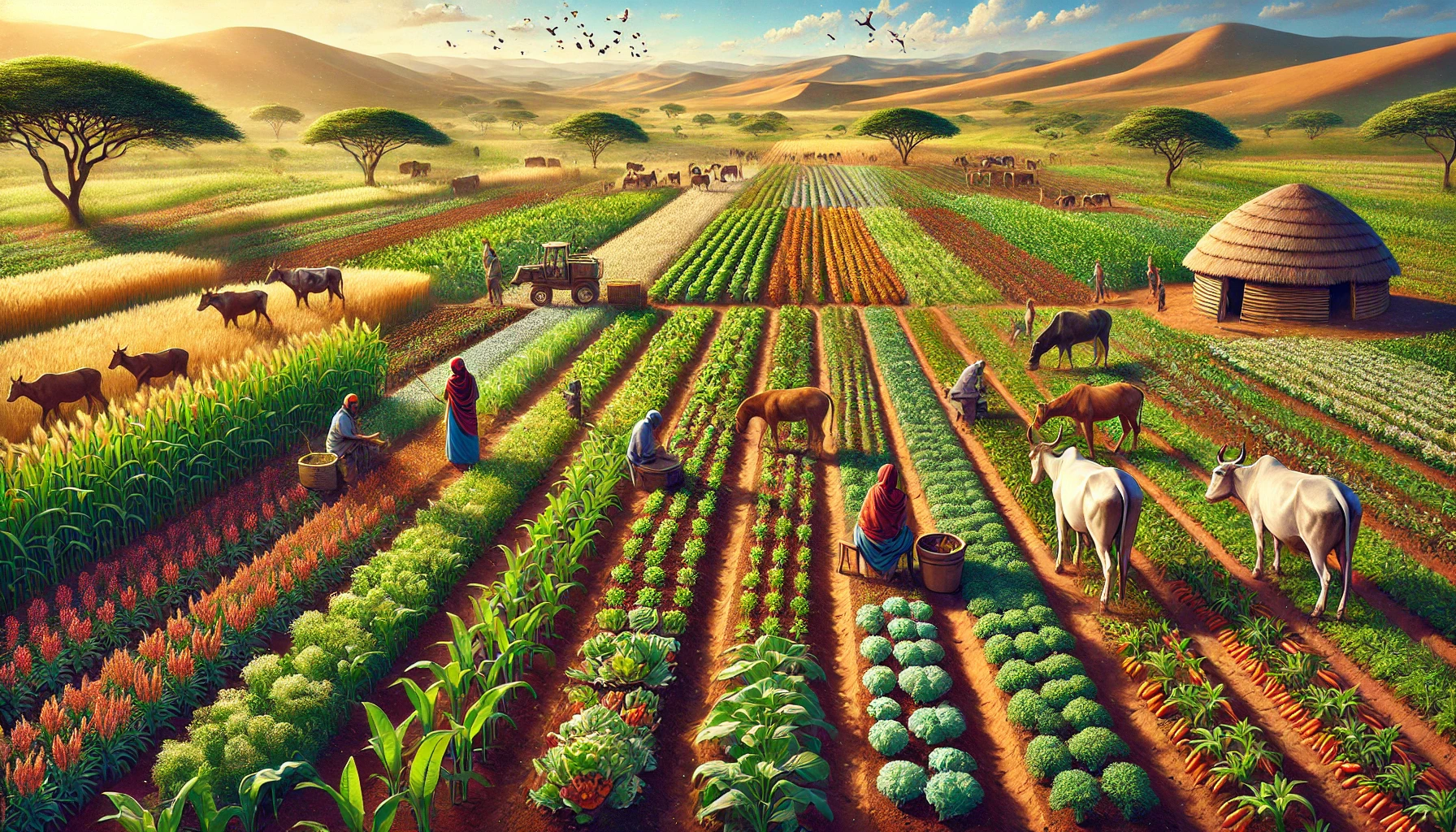Regenerative Agriculture: A Path to Sustainability Amid Barriers in African Farming
The World Bank’s review on regenerative agriculture highlights its potential to improve soil health, productivity, and climate resilience, but faces significant challenges such as high costs, lack of empirical evidence, and the need for local support in Africa. Payments for ecosystem services could help incentivize widespread adoption, though further research is needed.

The World Bank’s Africa Region Office of the Chief Economist recently released a comprehensive policy research paper by Andrew Dabalen, Aparajita Goyal, and Ruozi Song. The paper explores the potential of regenerative agriculture as a solution to various challenges in global agriculture, particularly focusing on its application in Africa. This approach emphasizes improving soil health and ecosystems and has been gaining momentum as a crucial tool for sustainable farming, especially in the face of climate change. The World Bank’s research highlights the importance of regenerative agricultural practices such as minimal soil disturbance, crop rotation, composting, and livestock integration to restore soil productivity and increase resilience to climate shocks. However, despite its potential, the research underscores that empirical evidence on the effectiveness of regenerative agriculture is still limited, and significant challenges exist for its large-scale adoption, particularly in African countries.
Balancing Short-Term Losses with Long-Term Gains
Regenerative agriculture aims to address three main goals improving productivity, enhancing resilience, and mitigating climate change through carbon sequestration in soil. The paper discusses how, theoretically, these goals are achievable, but practical implementation is often fraught with difficulties. One key issue is the context-specific nature of regenerative agriculture; its success largely depends on local climate conditions and existing agricultural practices. For instance, practices like reduced or zero-tillage are more effective in some regions than others. In Africa, where smallholder farmers dominate the agricultural landscape, several market failures make the widespread adoption of regenerative practices challenging. These include the trade-off between short-term productivity losses and long-term gains, the need for costly machinery, and the lack of local knowledge support. Smallholder farmers, who often operate on thin margins, face immediate pressure to maintain or increase yields, which makes it hard for them to invest in regenerative practices that may not pay off for several years. Additionally, these farmers are often constrained by limited access to credit and markets, further hindering the adoption of sustainable agricultural techniques.
Potential of Payments for Ecosystem Services
The paper also emphasizes the potential of payments for ecosystem services (PES) as a solution to some of these challenges. PES systems could provide financial incentives to farmers who adopt regenerative agriculture by compensating them for the ecological benefits their practices generate, such as carbon sequestration. This could create a new source of income for smallholder farmers, making the transition to regenerative agriculture more appealing. However, the authors note that the design of these payment systems needs to be carefully developed to suit local conditions. Currently, PES is still in the early stages, and there is not enough evidence to confirm its effectiveness on a large scale, particularly in the African context. The paper suggests that further research is necessary to explore how PES can be integrated into agricultural policies and how it could potentially align with other sustainable development goals.
Limited Empirical Evidence on Productivity and Climate Mitigation
One of the central concerns of the paper is the lack of empirical evidence regarding the true effectiveness of regenerative agriculture, especially when it comes to achieving simultaneous gains in productivity, resilience, and climate change mitigation. While there are examples of success in places like Argentina, where no-till practices were widely adopted, the results have been mixed elsewhere. For instance, studies from various regions show that while regenerative agriculture can enhance productivity in dry climates, it may reduce yields in cooler, wetter regions. Moreover, the impact of these practices on carbon sequestration remains unclear. While soil carbon storage is one of the touted benefits of regenerative agriculture, the extent to which it can actually contribute to climate change mitigation is still up for debate. Factors such as soil type, depth, and the specific practices used can all influence the outcome, and in some cases, carbon sequestration benefits may be offset by other agricultural emissions.
High Costs and Lack of Support as Barriers to Adoption
The paper also points out that significant barriers remain to the large-scale adoption of regenerative agriculture in Africa. These include the high costs associated with adopting certain practices, such as no-till farming, which requires specialized equipment, and the lack of local technical support to help farmers implement these practices effectively. Without local institutions to provide guidance and training, farmers are unlikely to trust or understand the benefits of regenerative agriculture. Additionally, many smallholder farmers in Africa are constrained by insecure property rights and limited access to credit, making it difficult for them to invest in new technologies or techniques that might boost long-term productivity. The lack of robust insurance systems further discourages risk-taking, as farmers are unwilling to gamble on practices that could result in short-term losses, even if the long-term benefits are significant.
The Path Forward: Overcoming Economic and Institutional Challenges
The paper highlights that while regenerative agriculture holds promise as a sustainable farming solution, especially in the face of climate change, much more work is needed to make it a viable option for smallholder farmers in Africa. Payments for ecosystem services could play a crucial role in incentivizing the adoption of regenerative practices, but these systems need to be carefully designed and tested. Moreover, further empirical research is required to understand the trade-offs between productivity gains, resilience, and carbon mitigation, as well as the local conditions that can make or break the success of regenerative agriculture. The World Bank's research underscores that while the potential is there, realizing it will require overcoming significant economic, institutional, and practical hurdles.
- FIRST PUBLISHED IN:
- Devdiscourse










